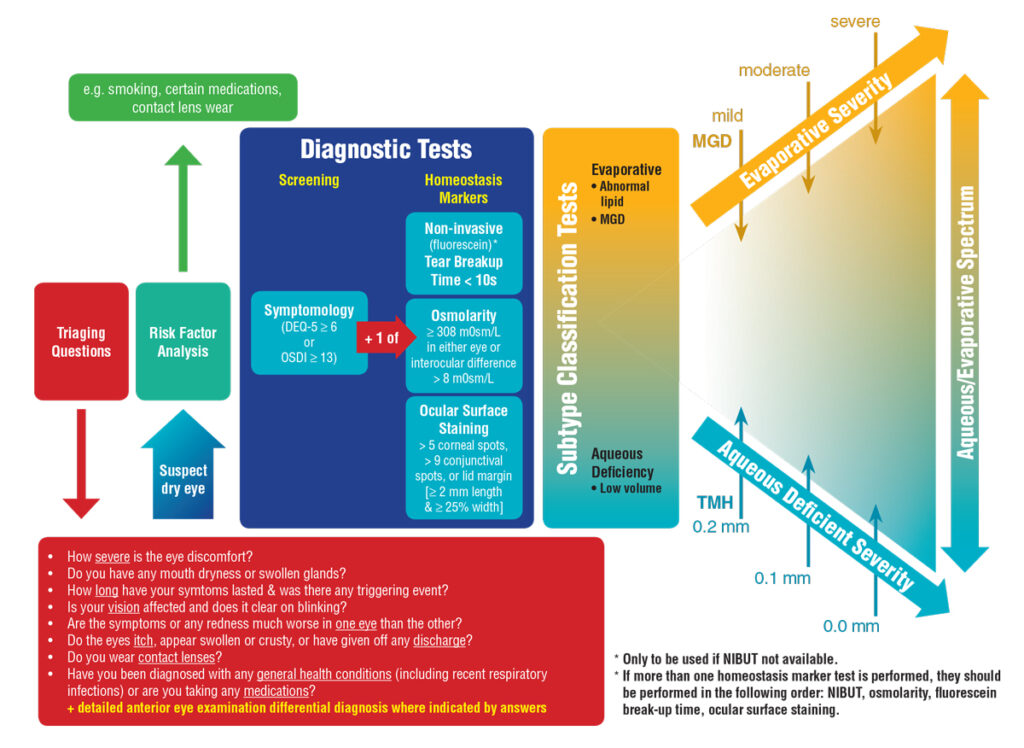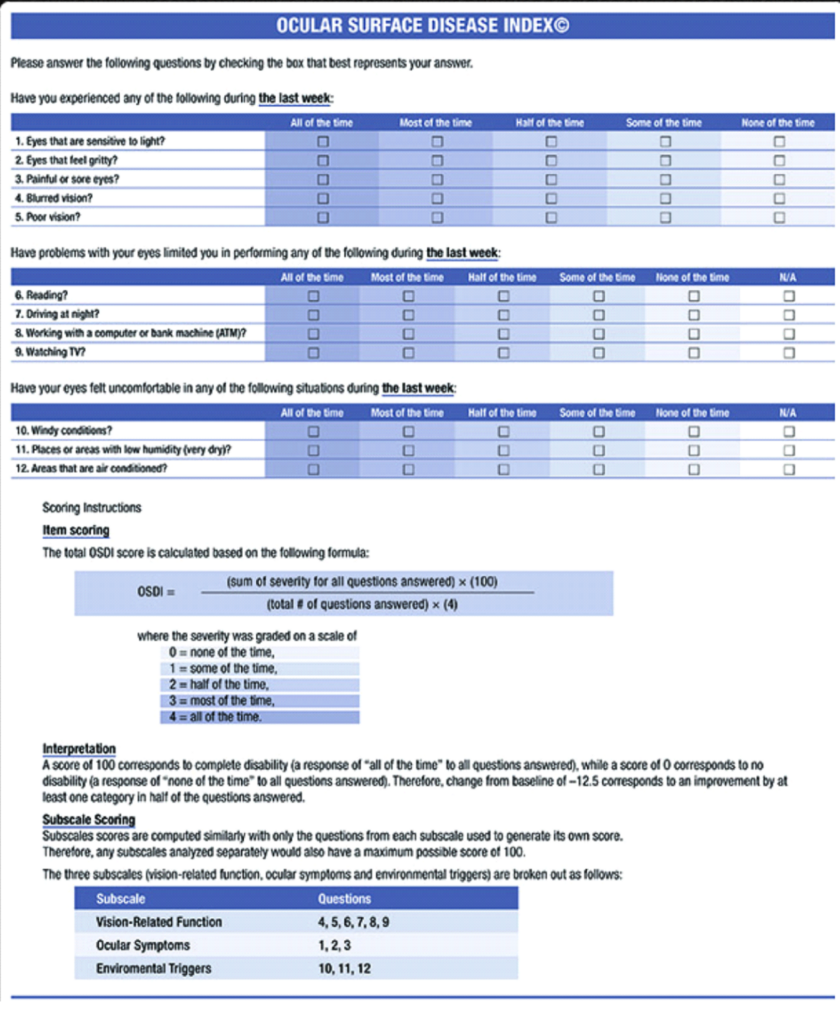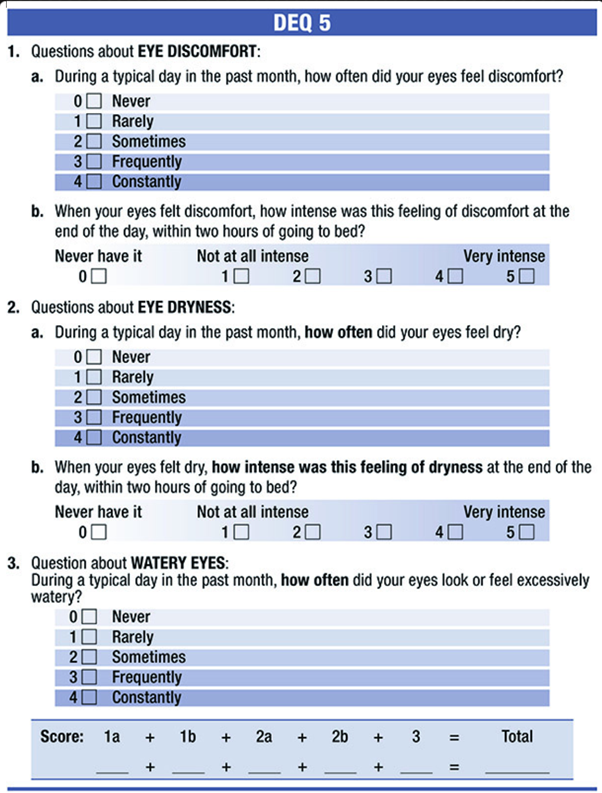
Focus on … DED diagnosis
Diagnosis
If we look at Fig 23 for the suggested diagnostic approach, we can identify the areas where DOs can have a vital part to play. Triaging questions, analysis of risk factors, symptomology, and of course advice on management including nutrition.
Fig 2. Recommended diagnostic approach for DED8.
The first part of the TFOS recommended diagnostic process is triage, this will help differentiate potential of DED from other OSD or conditions which may mimic DED. The triaging questions are questions which might normally be part of gathering history and symptoms during an eye examination or contact lens consultation but that does not limit their use to the consulting room. Understanding this information requires the right type of questions:
- In terms of severity, how bad is the discomfort? A scale of 1 -10 (from none to excruciating) would be most appropriate here.
- Is there any inflammation, swelling, redness or discharge? Itching and discharge are uncommon in DED and might indicate an allergy and/or infection. A dry mouth or swollen glands might indicate Sjögren’s Syndrome and a referral to the patient’s GP would be appropriate.
- Is the vision affected? Dry eye does affect vision but changes with blinking.
- Onset and triggers – when did it start and was there anything that set it off?
- Identifying risk factors. For example how is the patient’s general health? Which medications do they take? Are they in a new job or work environment, or taking any new medication?
- Is the duration minutes, hours or continuous? Monocular or binocular? A unilateral red eye is a red flag and not typical of DED.
- And of course, does the patient wear contact lenses?
These questions should be combined with an assessment of various risk factors, as described in the section on prevalence and epidemiology.
The next step is to assess the level of symptoms and to do this one of two recognised questionnaires are recommended,8 the Ocular Surface Disease Index (OSDI) or the Dry Eye Questionnaire (DEQ-5). (Fig 3)10,11
Fig 3 Symptomology questionnaires10,11.
From Ocular Surface Disease Index (OSDI) created by the Outcomes Research Group at Allergan Inc
Both questionnaires are robust and reliable but offer a different level of insight into the condition. The DEQ-510 is more simplistic, asking for symptoms on a typical day in the last month, whereas the OSDI11 offers insight into interpretation, level of severity and sub-grouping and reviewing symptoms over the previous week. It is also available as an app on mobile devices which does the slightly complicated calculation for you or your patient.
The cut off scores for these are 13 for OSDI and 6 for DEQ-5, a score equal to or higher indicates a positive result of symptoms of DED. A positive score in either of these should next lead to a more clinical investigation of homeostasis markers, or signs.
The conduction of tests for assessing these homeostasis markers falls outside of the remit of the DO however it is important that the supporting role of the DO covers the understanding of these tests and their results. A CLO/ESCLO may well get involved with conducting these tests where suitably competent.


